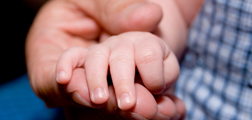Bullying

Bullying is a deliberate and unsolicited action that occurs with the intent of inflicting social, emotional, physical, and/or psychological harm to someone who often is perceived as being less powerful.
When a child feels intensely threatened by an event he or she is involved in or witnesses, we call that event a trauma. There is a range of traumatic events or trauma types to which children and adolescents can be exposed.

Bullying is a deliberate and unsolicited action that occurs with the intent of inflicting social, emotional, physical, and/or psychological harm to someone who often is perceived as being less powerful.

Community violence is exposure to intentional acts of interpersonal violence committed in public areas by individuals who are not intimately related to the victim.

Complex trauma describes both children’s exposure to multiple traumatic events—often of an invasive, interpersonal nature—and the wide-ranging, long-term effects of this exposure.

Natural disasters include hurricanes, earthquakes, tornadoes, wildfires, tsunamis, and floods, as well as extreme weather events such as blizzards, droughts, extreme heat...

Early childhood trauma generally refers to the traumatic experiences that occur to children aged 0-6.

Intimate Partner Violence (IPV), also referred to as domestic violence, occurs when an individual purposely causes harm or threatens the risk of harm to any past or current partner or spouse.

Pediatric medical traumatic stress refers to a set of psychological and physiological responses of children and their families to single or multiple medical events.

Physical abuse occurs when a parent or caregiver commits an act that results in physical injury to a child or adolescent.

The US history of colonialism, genocide, slavery, and white supremacy continues to impact BIPOC (Black, Indigenous, and People of Color) children and families through covert and overt forms of racism...

Many refugees, especially children, have experienced trauma related to war or persecution that may affect their mental and physical health long after the events have occurred.

Child sexual abuse is any interaction between a child and an adult (or another child) in which the child is used for the sexual stimulation of the perpetrator or an observer.

Child sex trafficking involves the giving or receiving of anything of value (money, shelter, food, clothing, drugs, etc.) to any person in exchange for a sex act with someone under the age of 18.

Families and children may be profoundly affected by mass violence, acts of terrorism, or community trauma in the form of shootings, bombings, or other types of attacks.

While many children adjust well after a death, other children have ongoing difficulties that interfere with everyday life and make it difficult to recall positive memories of their loved ones.